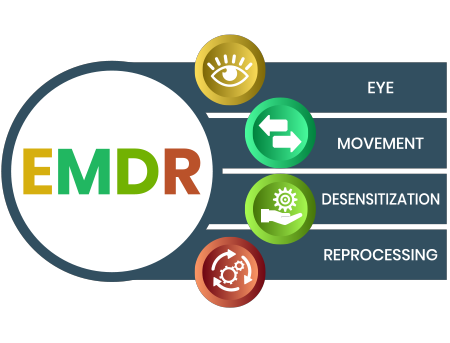 Trauma can have a persistent impact on one’s life.
Trauma can have a persistent impact on one’s life.
Individuals who experience trauma can develop distress that can last for extended periods. Persistent effects of trauma can impact a person emotionally and physically – creating anxiety, an increased sense of fear, depression, fatigue, and other symptoms.
Trauma can result from exposure to natural disasters, violence, war, divorce, sudden physical disability, injuries, and other life-changing events. Often, a traumatic event or harmful relational pattern is the root cause of substance abuse, anxiety, depression, phobias, and other conditions.
Everyone deals with trauma differently, and individualized approaches are needed for each client.
When trauma persists, EMDR (Eye Movement Desensitization and Reprocessing) is a highly effective modality for treating trauma and conditions that can arise from trauma. It is also one of the most heavily researched healing modalities in psychology.
How does EMDR work?
EMDR works directly with neural networks, a system of connected neural pathways that stimulate thoughts, emotions, and reactions in the mind and body. Neural networks are heavily influenced by impactful experiences.
The fundamental goal of EMDR is to reduce the impact of the trauma-based (or maladaptive) neural network and increase the power and response of the adaptive neural network.
When engaging in EMDR treatment, we begin developing emotional stabilization skills. Next, we conceptualize traumatic events or relationships and how they affect you. With this, we are set to start utilizing bilateral stimulation to desensitize and reprocess the neural networks affected by trauma and create new connections with adaptive neural networks.
Combining verbal and thought-based techniques with bilateral stimulation (in this case, eye movements) can biologically change how these neural networks operate.
EMDR can make an enormous difference!
Clients may mention that developing a deeper understanding of their thought patterns or talking through emotions doesn’t always reduce the effects of unwanted symptoms. EMDR works with not only thoughts and emotions, but also physiological symptoms. It accesses and reduces the impact of unwanted reactions and responses at the most fundamental level.
I have witnessed how EMDR helps people transform in incredible ways! Clients who have felt stuck and unable to change for years have accomplished their goals within months of EMDR treatment. Trauma-informed therapy has become much more widespread in the field because it provides dramatic and lasting results.
If you suffer from the persistent effects of trauma, EMDR can transform your life. For more information on how I can help, please contact me today.

